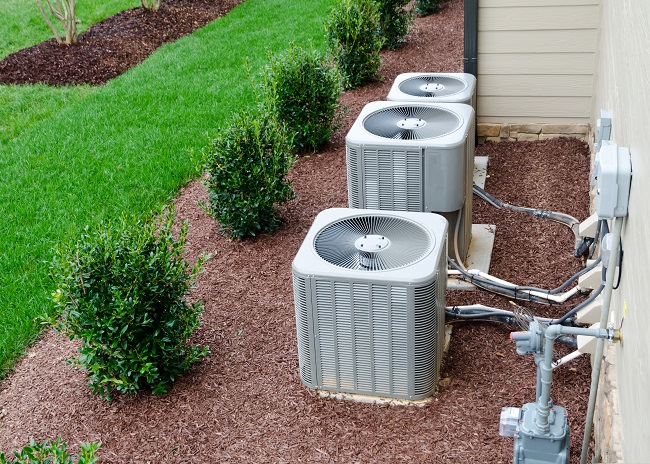Understanding how an air conditioner generally works, and the names of its main components are useful to know, especially to help you better understand if anything comes up needing repair in the future. You’ll be able to relate what your technician is telling you about your ac system to what you know about how it works.

So, is an air conditioner that loud cube-shaped metal box outside with a fan on top and slits for air to pass through? Well, sort of. Generally, that’s half of it, called the condenser. The other unit is the air handler, which sits either horizontally in the attic or somewhere in a garage or closet within a home or building. Sometimes the two units are combined into a packaged unit, usually found on a roof or backyard but with duct work attached to it.
The Air Handler
The air handling unit is the part of the air conditioning system which handles sucking in the air at the air filter, passing it across a near-freezing cold metal coil, and blowing out the air into the duct work at a colder temperature than it came in at. It’s shaped perfectly rectangular on each side, like a refrigerator, and usually has a metal pan underneath and a condensation drain pipe going outside. Some versions can also function as a gas furnace or electric heater as well.
The Condenser
This unit is always located outdoors because it blows heat from within the building to the outside environment by having a fan pull cool air quickly over its coil. This cools the gas inside the coil after having been compressed, so it can be sent to the air handler at a near freezing temperature. Inside the condensing unit is a compressor at the bottom, and a fan at the top, all surrounded by the coil, exiting with two copper pipes leading either up the side of the building, or underground, inside to the air handler.
Have any other questions about air conditioners or how they work? Read more, or contact us at Tri County Air Care today. Schedule an appointment to have a friendly service professional come over and explain the entire system to you, or to take a look inside your own air conditioner and ensure that it’s running properly.
